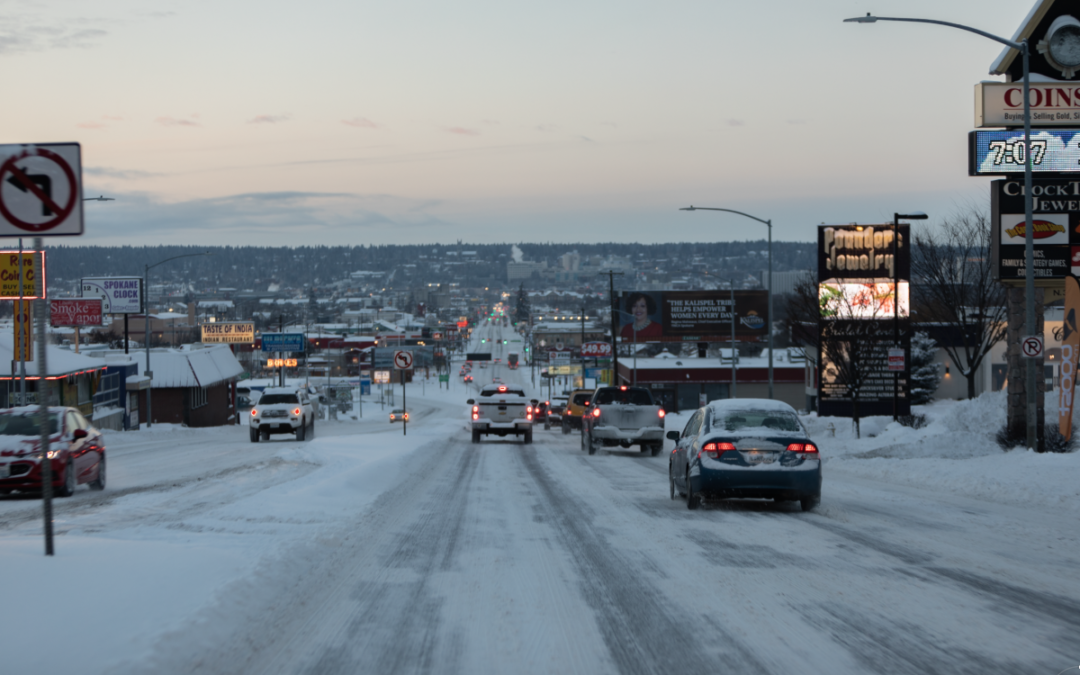Driving In The Snow 101
Winter driving is never easy and is associated with some of the most extreme weather situations you may ever encounter with 4 wheels. We’ve seen it all, from slide off damage, heavy impact and simple accidents from winter weather. Here are some common situations that we’ve heard from our customers over the years….we hope this helps you.
Remember, if you’re not comfortable with the conditions, the number one thing you can do to avoid a collision is to stay home, don’t drive….your life is worth more than getting where you need to go!
I Have to Drive in the Snow: Now What?
Snow tends to be best enjoyed from indoors—not out on the road. It’s best to avoid driving in the snow if you can, but if you must get behind the wheel, follow these tips to have a safe journey.
Here are 7 basic tips to help you get to point B safely:
Accelerate and decelerate slowly
Accelerating slowly prevents your car from skidding out and will cause less risk on the road.
If your wheels are spinning, you have zero control of your vehicle. Spinning wheels are not nearly as problematic if you have a vehicle that has traction control. But in every icy or slippery situation, you will not move any faster by pushing the gas pedal.
Take time to slow down and to stop
Unfortunately, skidding and slipping are common occurrences in snowy weather, and when you find yourself losing control of your car, the natural inclination is to brake hard. Your vehicle is heavy, perhaps heavier than you think. The more mass that is under your control, the more effort you will need to stop and go. It sounds simple, it is, but it’s easy to go with the flow. Watch everything around you and prepare to stop by stopping early.
Drive slowly. Accelerating, stopping, turning.
Hopefully, this one is obvious: if you’re traveling on slippery or slushy roads, you should reduce your speed. Speed limits are based on ideal conditions, and if you are driving through heavy snow, you’re not going to be able to go as fast as you would on a clear, warm day. Perhaps this is the hardest tip to remember. It never makes sense to drive slow when everyone is passing you…right? Avoiding an accident is best done by not being in it. We’re not suggesting you should drive slower than everyone else, just go slow enough that you’re comfortable reacting to the conditions with your vehicle.
Following distance should remain 8-10 seconds
An increased margin of safety will provide the longer distance needed if you have to stop.
Drive with Plenty of Gas
During the winter, you should always drive with at least half a tank of gas. This will prevent your gas line from freezing. It’s smart to have this much gas in the car anyway—you don’t want to get stranded somewhere in the snow! Be sure you’re fueling up regularly so you’re not taking any chances.
Don’t power up hills
Your wheels will spin out and going forward will be difficult. When you’re on the other side, go downhill as slow as you can.
Know your brakes
Whether you have antilock brakes or not, keep the heel of your foot on the floor and use the ball of your foot to apply firm, steady pressure on the brake pedal.
Don’t stop if you can avoid it
There’s a big difference in the amount of inertia it takes to start moving from a full stop versus how much it takes to get moving while still rolling. If you can slow down enough to keep rolling until a traffic light changes, do it.
Stay home
If you don’t have somewhere you have to be, stay home and watch the snow from indoors
We hope these help you along your winter travels. Of course, should you need repairs, we’re here to help you with any questions you may have.
There are so many more tips, please leave your best help for winter driving in the comments.

